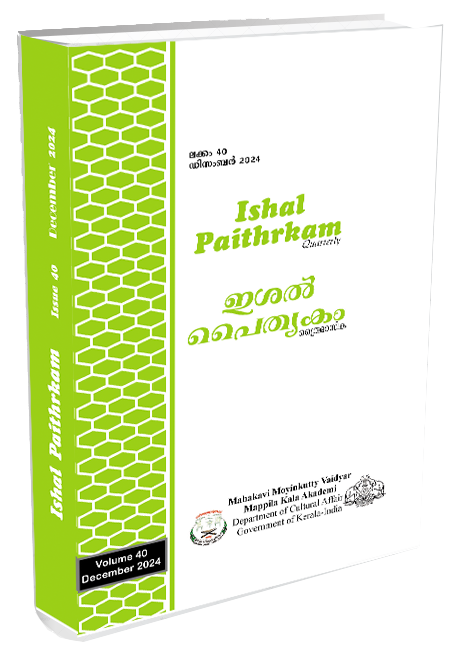Resurrecting Draupadi: Feminist Echoes in Chitra Banerjee Divakaruni’s The Palace of Illusions
Keywords:
Marginalization, Feminist Retelling, Identity and Agency, Patriarchal Structures, EmpowermentAbstract
This paper explores contemporary Indian literature’s reexamination and reinterpretation of ancient myths, folklore, and history, focusing on dismantling patriarchal structures and misconceptions. Through a feminist lens, it scrutinizes Chitra Banerjee Divakaruni’s The Palace of Illusions, a retelling of the Mahabharata from Draupadi’s perspective. The novel illuminates Draupadi’s innermost thoughts and emotions, challenging traditional portrayals and highlighting her resilience and agency. It delves into themes of identity, gender dynamics, and societal oppression, revealing how feminist retellings enrich literature and contribute to social justice. By reclaiming marginalized voices and offering a new narrative, the retelling fosters a critical reevaluation of cultural values, advocating for inclusivity and gender equality. Divakaruni’s work exemplifies this transformative approach, portraying Draupadi as a complex, multifaceted character whose story resonates with contemporary issues, ultimately reshaping cultural narratives and their perceived value.
Downloads
References
Adichie, C. N. (2015). We Should All Be Feminists. Anchor Books.
Barthes, R. (1977). Image, Music, Text. Fontana Press.
Benjamin, W., Arendt, H., Zohn, H., & Wieseltier, L. (1968). Illuminations: Essays and Reflections (pp. 217–251). Houghton Mifflin Harcourt Publishing Company.
Butler, J. (1990). Gender Trouble: Feminism and the Subversion of Identity. Routledge.
Butler, J. (1993). Bodies that matter: On the Discursive Limits of Sex. Routledge.
Carter, A. (1980). The Sadeian Woman and the Ideology of Pornography. Harper & Row.
Cixous, H. (1976). The Laugh of the Medusa. Signs: Journal of Women in Culture and Society, 1(4), 875–893.
Divakaruni, C. B. (2019). The Palace of Illusions. Picador India.
Hoggart, R. (1971). The Uses of Literacy. London, Chatto and Windus.
Hooks, B. (2000). Feminism Is for Everybody: Passionate Politics. South End Press.
Lessing, D. (1962). The Golden Notebook. 4Th Estate.
Said, E. W. (1983). The World, the Text, and the Critic. Harvard University Press.
Showalter, E. (1977). A Literature of Their Own: British Women Novelists from Brontë to Lessing. Princeton University Press.
Showalter, E. (1979). “Towards a Feminist Poetics”. Women’s Writing and Writing about Women (pp. 22-41). Croom Helm.
Spivak, G. C. (1988). “Can the Subaltern Speak?” In C. Nelson & L. Grossberg (Eds.), Marxism and the Interpretation of Culture (pp. 271-313). University of Illinois Press.
Steinem, G. (1983). Outrageous Acts and Everyday Rebellions. Holt, Rinehart, and Winston.
Woolf, V. (1929). A Room of One’s Own. Hogarth Press.
Downloads
Published
Issue
Section
License
Copyright (c) 2025 ISHAL PAITHRKAM

This work is licensed under a Creative Commons Attribution-NoDerivatives 4.0 International License.

